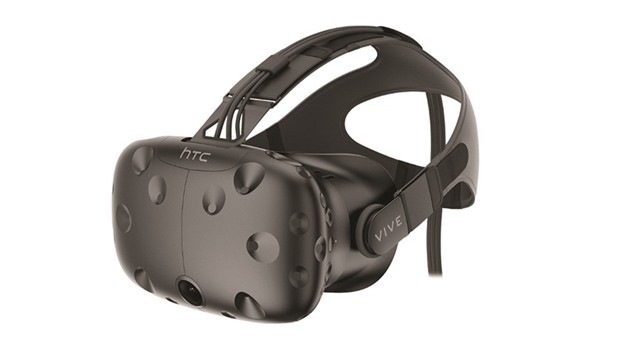The year 2016 has been another year of mostly refinements, as far as technology is concerned. Nothing truly exciting or game changing was revealed during 2016. Arguably, the last truly great technological invention in terms of impact was the modern smartphone. Virtual Reality holds promise, but it is still too early to call it.
The tablet and the smart watch have both failed to live up to the hype and generate nowhere near the kind of sales that smartphones do. Incidentally, smartphone sales growth too has seemingly begun to flat line – the market seems to be reaching its saturation point and newer flagships are just not that much more compelling over the models they replace.
Every year brings with it the usual array of faster processors, more RAM, and bigger storage. Android and iOS too have matured quite a bit, and the past few years have mostly been about incremental upgrades and slight changes than major overhauls. With the latest flagships offering more or less similar features as the models they replace, there is simply little reason for many people to upgrade.
That said, we finally got rid of the great megapixel war on phone cameras, with manufacturers choosing to focus instead on picture quality. A lot of manufacturers decided to go with dual-camera setups in a bid to improve the capabilities of cameras on their smartphones. Interestingly, just about everyone had a different idea of what they wanted to do with such a setup. LG, for instance, decided to add a wide-lens second camera to the back of its flagship phones. Huawei went with a monochrome secondary camera, for improved low-light photography. Apple decided to go with a 2X telephoto lens, promising up to 2X lossless zoom on its iPhone 7 Plus.
All these implementations add different but useful features to the phones and the jury is still out on which one is the best. Perhaps none, as it would ultimately depend on what your needs are. It will be interesting to see how these manufacturers build up on their implementations in 2017, and what other manufacturers (such as Samsung) decide to do with their camera units.
I have never really been convinced of the viability of the modern smart watches, ever since they were announced a couple of years back. The functions they offer are not must-have by any stretch of the imagination, they have abysmal battery lives and cost way too much for what they are. None of this seemingly changed in 2016, with smart watches going the tablet route – i.e. niche devices. They are the kind of devices that people would buy for the novelty factor than anything else.
If anything, a nice fork from all this smart watch business has been the wearable fitness device. By focusing on one aspect of the smart watch – and this is one aspect that smartphones do not do all that well – these devices truly make themselves useful to anyone interested in fitness. They also come in at lower prices than smart watches and feature the ability to track multiple sports and some even continuous heart rate. Most have smaller footprints, better battery lives and also offer some (but not all) smart watch features. What’s not to like?
The biggest headlining feature for 2016 was going to be Virtual Reality, with the release of HTC Vive and Oculus Rift. But their high prices – USD 600 for Rift and USD 800 for Vive – put them out of the reach of many casual and enthusiast gamers. Also compounding the issue is the fact that they require extremely high-end PC specifications. It may be a few more years before VR headsets such as these become mainstream.
What does have a good chance of becoming common much sooner is the Gear VR, developed by Samsung in conjunction with Oculus. While quite impressive for what it is, the 2K screens on mobile phones result in CRT TV-like quality (you can make out the pixels on the screen). The addition of 4K screens on future phones will surely help address this issue, but there have been mixed reports on whether we will see them in 2017 flagships. We have been stuck on 2K mobile screens for more than two years now, and while that is more than sufficient for regular use, it will have to go up if VR is to become a truly compelling proposition (personal home cinema anyone?).
When it comes to televisions, 4K and High Dynamic Range (HDR) were the mantra this year. As you may have guessed, 4K is simply the next step up from Full HD resolution with four times the resolution. An HDR TV does much better than a regular TV at displaying scenes with very bright and very dark images, assuming of course that the content supports this feature. This is similar to the HDR feature on your smartphone camera apps, you can simply see more of the scenery, especially in tricky lighting scenarios. Though 4K televisions are already in the realm of mainstream affordability, there is a consensus amongst reviewers that HDR is the feature that is truly worth having. Combined with the right content, a good HDR TV can produce stunning results. It may be wise to skip the “affordable” 4K televisions this year and wait for a good 4K HDR TV to fall within your budget.
This year was also quite boring as far as gaming consoles were concerned. PS4 and Xbox One continued to fight for dominance. The well-reviewed PlayStation VR arrived a bit late to the scene and does not seem to have caught on all that well. Many people seem to believe that to truly enjoy the PS VR, you would have to upgrade to the PS4 Pro, which more than doubles the power of PS4. Perhaps the introduction of the Nintendo Switch in the March of next year will bring new and creative ideas to a market that seems to be currently obsessed with graphical fidelity.
Laptop manufacturers are finding it increasingly difficult to make their offerings compelling. They have been employing incremental updates in the form of faster speeds and lighter and better battery lives for years now, and 2016 was no different. None of these changes are significant enough for you to want to throw out your one- or two-year-old laptops. What’s most distressing is how entry level laptops are still stuck on sub-FullHD resolution. It is as if manufacturers are consciously keep the better screens from their entry level offerings to push avid media consumers from the QR2,000 and below range to QR3,000 range. Otherwise there seems to be little reason for newer laptops to still come out with screen resolution that was made common well over a decade ago.
Next week, we will look at the things to look forward to in 2017.

TECH


